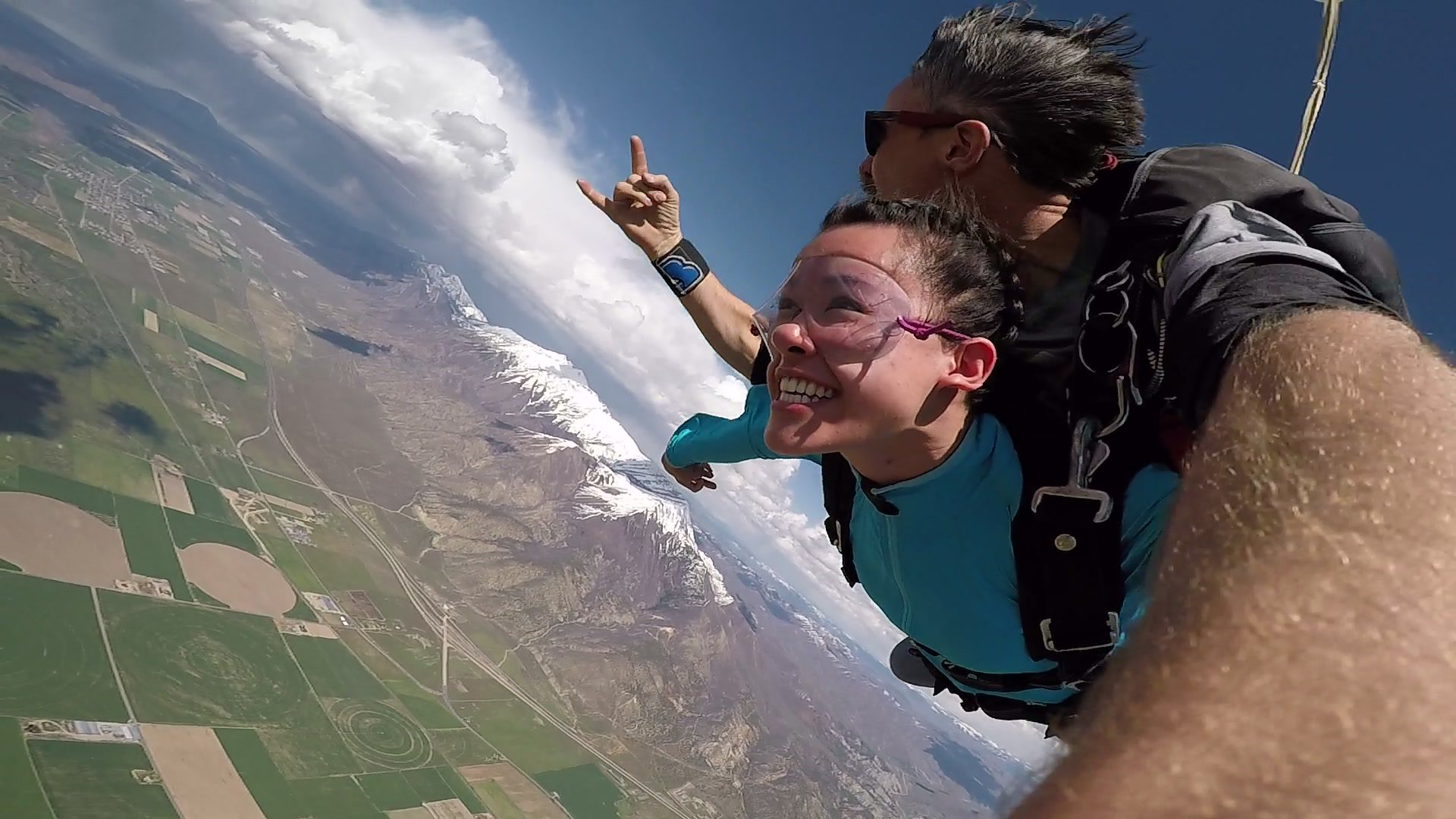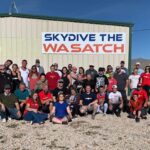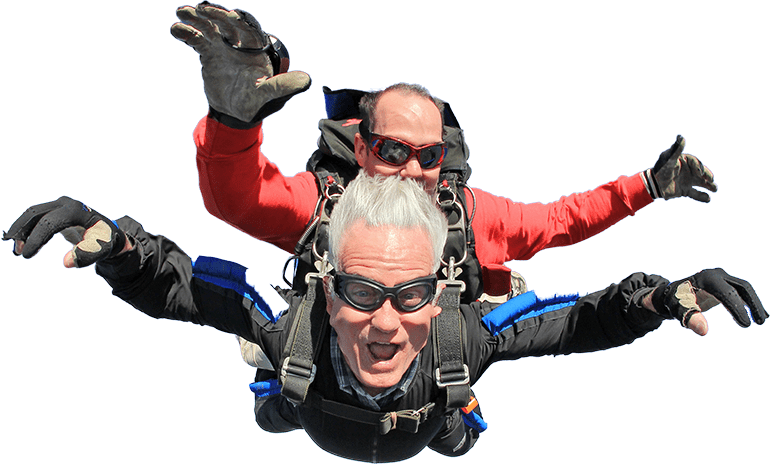You just landed after your first tandem skydive and all you want to do is figure out a way to get back on the plane. You see all the smiling faces around the dropzone, loading into the airplane, flying back to the ground under brightly colored parachutes- people laughing and high-fiving their friends. The atmosphere is magical. You may be asking yourself, how do I join this happy community of adventure seekers? We have good news for you! Starting a career in skydiving may be easier than you think. This blog will guide you through the many different skydiving career options and how to embark in the field!
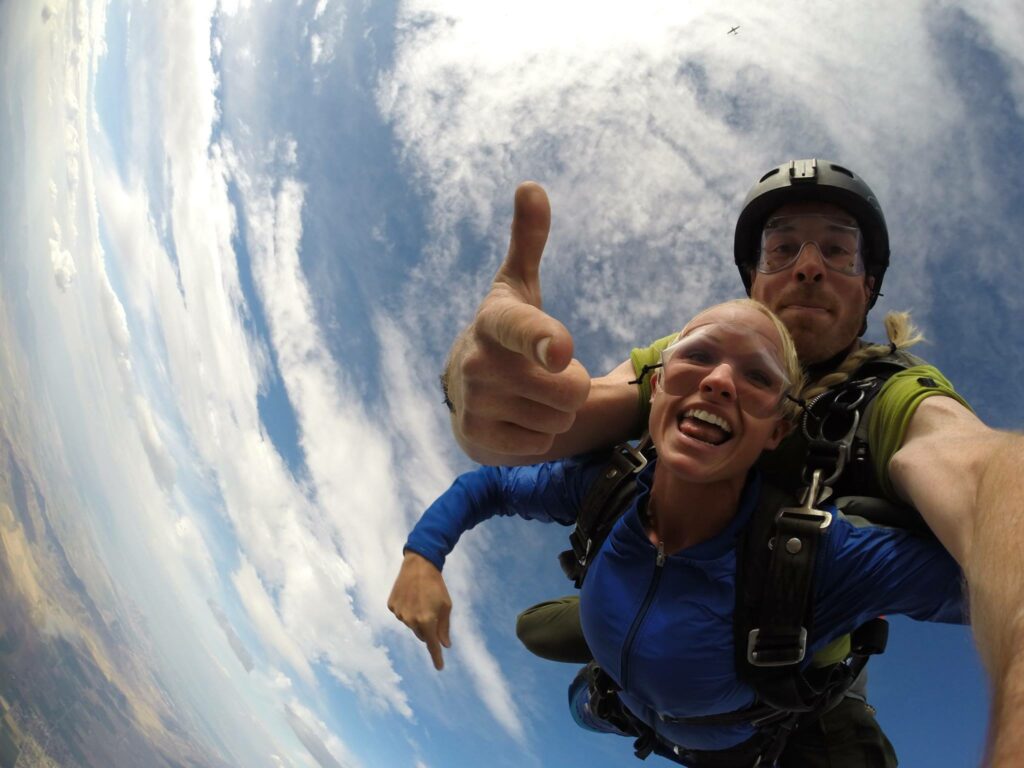
Getting Started in the Skydiving Industry
After a first skydive, we often have people who come to us who say, “Wow! That was awesome! I want to keep doing this, but I don’t have the money to go skydiving all the time.” Our suggestion is simple: hang around Skydive the Wasatch and wait for an opportunity.
The easiest way to get in the door in the skydiving community is to hang around the dropzone. We often have people who come, pitch a tent at the airport, and then wait till an opportunity presents itself. Almost all skydive instructors have done this before getting to where they are now in their skydiving career. The more time you spend at the dropzone, the more likely you’ll have chances of getting skydives and, in turn, be able to start a career in the skydiving industry.
To pursue a career in skydiving, you have to start at the bottom of the barrel. Early roles one can take on include manifest, harnessing, tandem training, parachute packing, or video editing. Beyond that, are even less glamorous tasks, like cleaning the bathroom, sweeping the packing mat and picking up line stows. The more time an individual puts into what may seem like menial tasks, the more experience they get, and the sooner they’re able to dive deeper into a career in skydiving.
What are the different types of Skydiving Careers?
1. Manifest
Manifest is the organization behind skydives. They’re the people who make skydives happen and keep the plane turning.
Manifest employees work in the front office and are typically one of the first points of contact for tandem skydivers. They take customers who have been checked in and schedule them on a particular load that will be taking people into the sky. Manifest are the unsung heroes of the skydiving industry as they’re the ones who organize skydives for maximum jumping possibility.
Manifest is one of the first jobs you can get in the skydiving industry as it requires little to no experience. As a manifest employee, you will be creating and organizing flights and managing load schedules. While manifest is a lower level job, it’s one of the most important because it is the backbone of dropzone operation.
2. Video Editor
Video Editing is one of the most gratifying entry-level positions one can have at a dropzone. A Video Editor holds the reins on packaging a customer’s skydive experience into something they’re able to remember forever.
The majority of first time tandem skydivers purchase a video to commemorate this life changing experience. Video Editors have the privilege of capturing that first once-in-a-lifetime experience and wrapping it up in a bow for our customers.
With an activity like skydiving, one can only remember so much about their first jump. Customers often remember the feelings and adrenaline, but are so overwhelmed with endorphins, that it goes by in the blink of an eye. Video Editors are able to take those emotions and put them on tape. They combine the magical views one sees on a skydive with the energy of the diver, encapsulating a remarkable journey that our customers can share with friends and family for the rest of their lives. Common feedback we receive from customers is that the only thing better than their skydive was the video footage.
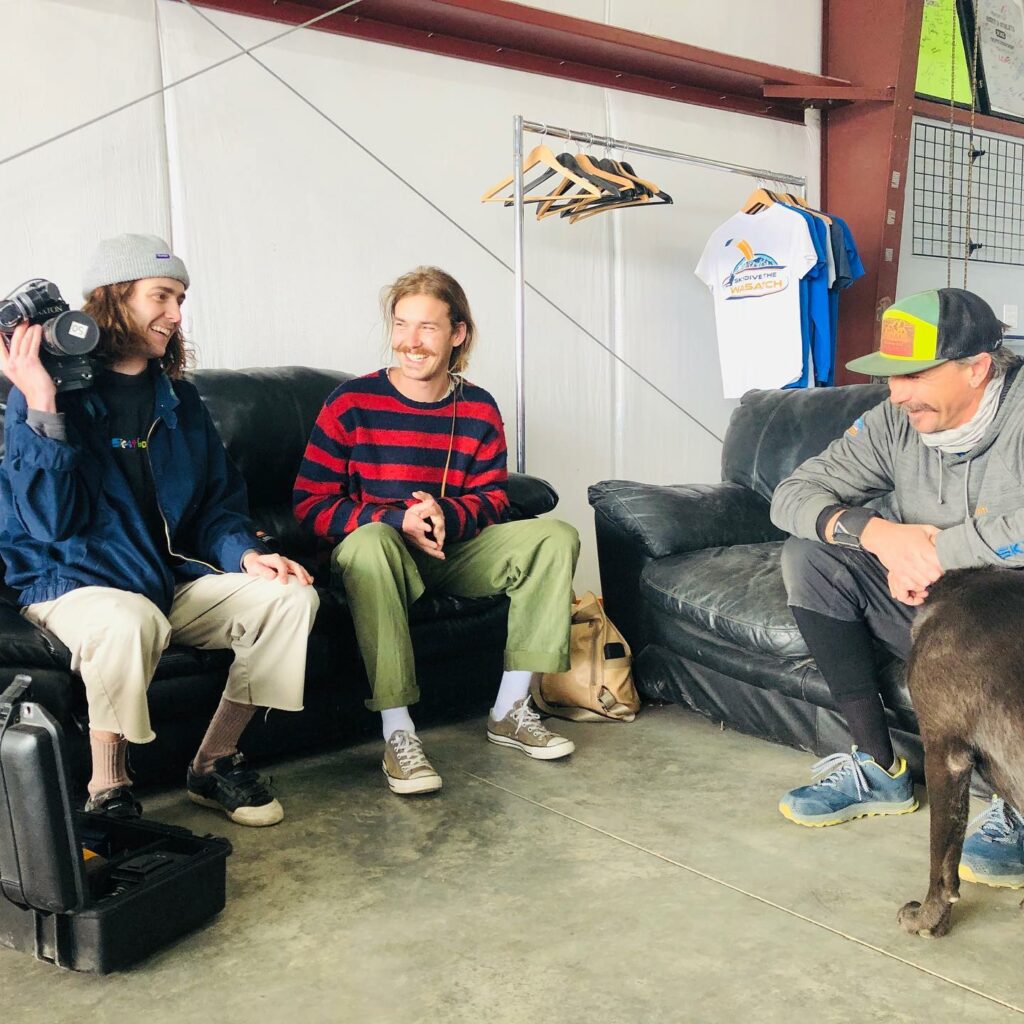
3. Packer
Parachute packing is another great introductory position at a dropzone that requires no prior knowledge or experience. A person looking to pack parachutes is first trained in the methods and techniques used in packing and then will pack under the supervision of a Senior or Master Rigger [see later descriptions].
Once someone is trained as a packer, they’re able to pack parachutes for solo jumpers and other licensed skydivers. Packing is great for learning the mechanics of skydiving and is one of the more common stepping stones to becoming a professional skydiver.
4. Coach
A coach is the first instructional rating one can get in the skydiving industry. In order to become a coach, someone must have their B License and have done at least 100 jumps.
Coaches are what they sound like- someone who coaches other skydivers. Coaches are permitted to go skydiving with other student skydivers that are cleared to solo and any licensed skydiver looking to hone their skills. Coaches are not allowed to physically touch an unlicensed skydiver in the manner that an AFF instructor might, however they are able to observe, advise, and assess.
Coaches assist other students and licensed skydivers with the planning and execution of a skydive. They help others come up with a dive plan, observe their dive plan, and provide feedback on their skydives. They help with putting on gear, pre-flight checks, and dirt dives. Dirt dives are like the dress-rehearsal for a skydive. They are done on the ground and are basically like standing up version of the dive flow, where skydivers plan their docks (grips made during a formation), flips, and barrel rolls. Coaches jump with other skydivers, but while an AFF instructor can grab the skydiver during freefall, coaches are simply there for observation. After the jump is completed, they can then critique and advise the skydiver on their skillset.
The coach rating is required in order to proceed with any additional Instructional Ratings.
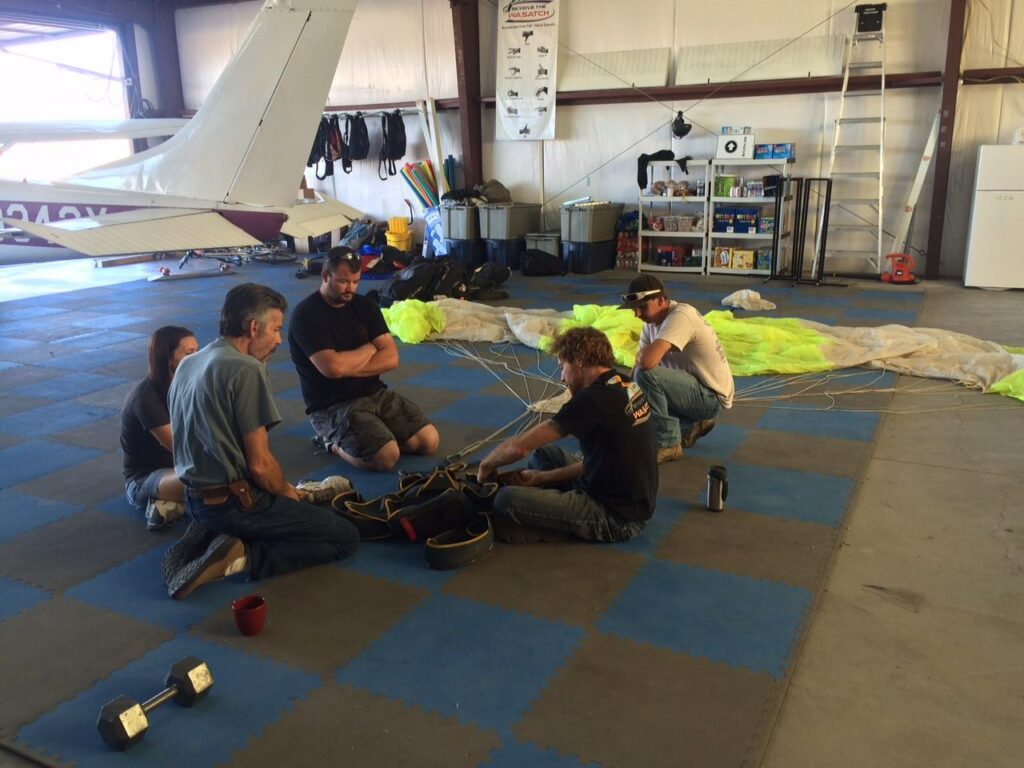
5. Skydive Instructor
There are a few different types of skydiving instructors: IAD (Instructor Assisted Deployment), SL (Static Line), and AFF (Accelerated Freefall). IAD and Static Line are very similar and are usually talked about simultaneously.
Static Line is the original way that skydiving was taught, and originates from military jumping. In SL skydiving, there is a cord or “static line” that is attached to the aircraft on one end, and to a pin and deployment bag system on the other. When a skydiver exits the aircraft, the weight of the jumper pulls the pin out automatically and starts the parachute deployment sequence.
Static Line is an introductory form of skydiving that reduces the importance of a stable body position in freefall and allows the student to focus on the most important part of every skydive- flying and landing the parachute.
Instructor Assisted Deployment or IAD, is similar to Static Line, but with the instructor playing the role of the static line. In IAD, the instructor holds the pilot chute and is responsible for deploying the parachute for the skydiver during freefall.
IAD was developed because of advancements in skydiving gear, the increasing length of skydiving freefalls, and the desire to progress from static line only jumps to jumps with actual freefall.
Accelerated Freefall or AFF is the most common form of modern skydiving training and refers to the method of training when two skydiving instructors hold on to either side of the student like training wheels. In AFF, the instructors are not directly attached to the skydiving student, but hold on to the student’s jumpsuit and/or harness and are there to provide the student with hand signals and hands-on assistance during freefall. The student is still responsible for deploying the parachute at the appropriate time, but the two instructors are there to guide them.
At Skydive the Wasatch, we focus primarily on the IAD method because of its reliability and the focus on canopy piloting during the early stages of training. Research shows that the majority of skydiving incidents occur during the canopy portion of a skydive. With IAD, we’re able to focus on the parachute first. During the student’s first few jumps, both the student and instructor have a radio on them which enables the instructor to guide the student through parachute flight and landing. In IAD training, the instructor holds and deploys the pilot chute for the student in the first 4-10 jumps. Once the student has successfully done 3 practice deployments, they can graduate to putting the pilot chute in the BOC (Bottom of Container) pocket and freefalling out of the airplane.
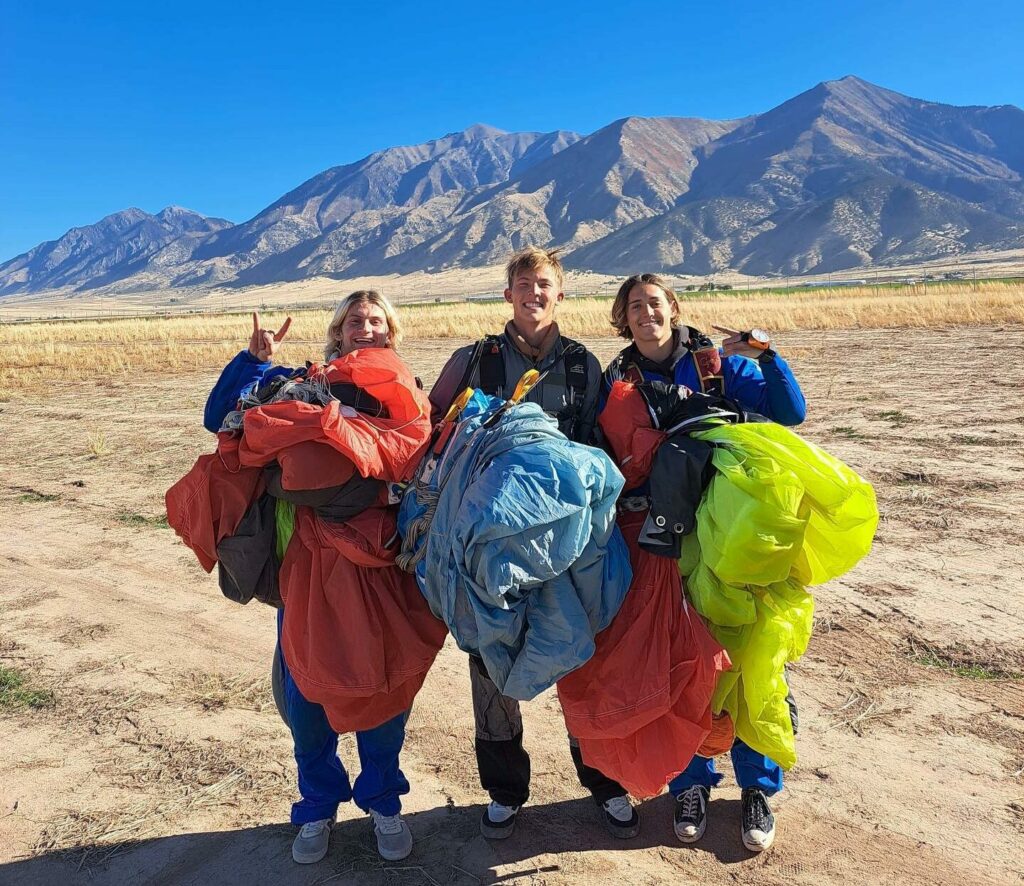
6. Tandem Skydiving Instructor
Tandem Instructor is the most common job in the skydiving industry and is typically how someone is first introduced to the sport. Someone goes on a tandem skydive, loves it, and then wants to become a professional skydiver.
If you’re a people person and enjoy the intimate nature of guiding someone through their first skydiving experience, this may be the job for you. However, it is not for the faint of heart. Tandem Instructors are the work horses of the skydiving industry. While one does not have to receive an AFF, SL, or IAD instructor rating before becoming a tandem skydive instructor [this is a personal decision], a good bit of experience is required before reaching this level.
To qualify for a Tandem Skydiving Instructor position, you must have been in the sport for at least 3 years, completed 500 skydives, earned a USPA D skydiving license, and have done at least one cutaway. A cutaway refers to disconnecting the main parachute from the harness-container in case of a malfunction and in preparation for opening the reserve parachute. Once these minimum requirements have been met, one is then able to take the training course to become a Tandem Instructor.
7. Dropzone Manager
Dropzone Manager or DZM is the closest position to a “normal” job and often requires little skydiving experience. A DZM is just like a manager at any other business. They oversee day-to-day operations, working with employees, contractors, and customers alike, and ensure that everything is running smoothly at the dropzone.
While no skydive experience is required, DZM’s typically have held many other positions within a dropzone before reaching the management level.
8. Dropzone Owner
Dropzone Owner is not for everyone, but for those it calls, building and owning a dropzone can be a beautifully challenging and rewarding experience.
DZO’s typically have held every position at a dropzone so they’re able to fit in where they’re needed on any given day. One day a DZO may fill in as a pilot, the next as an instructor, then a video editor, and even cleaning toilets the following. The dropzone is like the circle of life, and although some tasks are more taxing than others, most of the positions at a skydiving dropzone are fun ones. A DZO gets to participate in all of these roles without being locked into one.
In addition to enjoying the chaos that is a day at the dropzone, a DZO is also in charge of the back-of-house tasks, long term plans, financial decisions, advertising, budgets, and general dropzone management and oversight.
DZO’s will tell you that owning a dropzone is a lot of work, but it’s even more fulfilling.
Other Positions in the Skydiving Industry
- Wingsuit Training
Wingsuiting and wingsuit training are a sub-discipline of skydiving. Wingsuiting is when a skydiver wears a specially designed suit that adds surface area to the diver’s body to generate increased lift. The suits are designed to increase surface area, reduce drag, and hold the shape of a wing, creating increased forward speed and reduced vertical speed. A wingsuit provides more of a gliding sensation during a dive and allows the diver to cover a greater horizontal distance, ultimately giving them longer freefall times.
Many customers come to us for a tandem skydive and then want to get into wingsuiting because of what they’ve seen on TV and in movies. They like the appeal of looking like a flying squirrel. Here at Skydive the Wasatch, we share that desire and encourage all our tandem students to return for IAD solo training and the beginning of the journey towards wingsuit flying. While there are no specific licenses for wingsuiting, the USPA recommends having done at least 200 jumps.
Once an individual has gained some experience in wingsuiting, they can then coach others who want to get into wingsuiting. Wingsuit coaching and load organizing is another one of the amazing ways one can earn money in the skydiving industry.
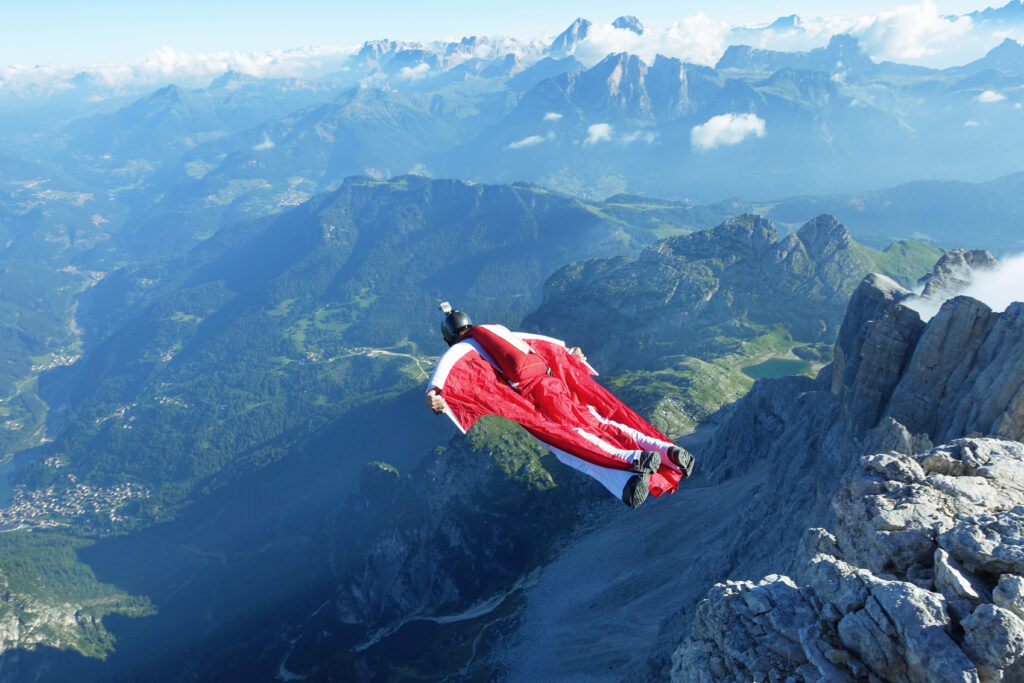
- Load Organizer
A load organizer is an experienced skydiver who organizes groups of other licensed skydivers in doing interesting jumps. Load Organizers are not necessarily licensed coaches like discussed earlier, but help other experienced skydivers in setting up their jump plan and dive flows in a particular discipline like: wingsuiting, free-flying, Relative Work (RW), Canopy (CRW), angle flying and many others.
Load Organizers don’t always jump with the groups they organize, but their role is to ensure safety on those jumps, while also providing an educational and fun atmosphere to other skydivers.
- Rigger
Earlier in this post, we discussed the parachute packer position. Those who enjoy the packing discipline may find themselves drawn to becoming a rigger. Parachute packers become intimately familiar with the parachute equipment. Should they desire to expand this knowledge, a rigger’s ticket (certification handed down by the FAA) may be in order.
Riggers are the mad scientists of the skydiving industry. They repair, maintain, and even design the gear used by skydivers. From harnesses to containers, parachutes and jumpsuits, all of the different pieces of skydiving equipment are sewn together with fabric and thread by riggers to create the magic backpacks we all wear on our freefall adventures.
-
-
Senior Rigger
Senior riggers are the entry level version of a certified parachute rigger. They are extremely useful at skydiving dropzones, working as the mechanic for parachutes, and the position requires zero skydiving experience. The only requirements to become a senior rigger are a minimum of 20 reserve parachute repacks while under the supervision of a Master Rigger, and passing a written and oral test by the Federal Aviation Administration (FAA).
-
-
-
Master Rigger
Master Riggers are the next level in parachute rigging. In order to become a Master Parachute Rigger, the Senior Rigger must accrue three years of experience, complete a total of 200 reserve pack jobs, and pass an oral and practical test by the FAA.
-
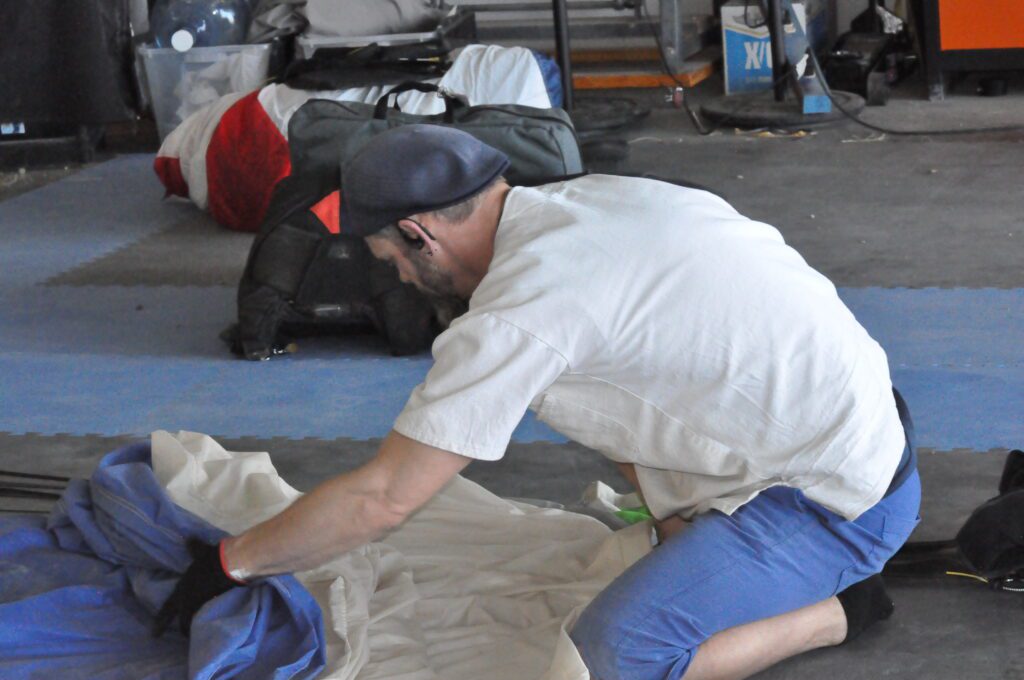
While this blog covers a majority of careers in skydiving, there are many other positions that weren’t described in detail, such as: pilot, safety and training advisor, aircraft maintenance technician, and more. For more information on those roles or one of the career options listed above, please reach out to us at info@skydivethewasatch.com or visit us in person at 2001 N. Airport Rd., Nephi, UT 84648.

